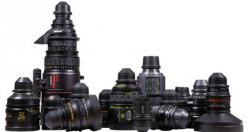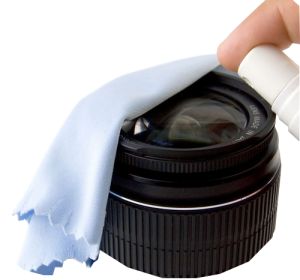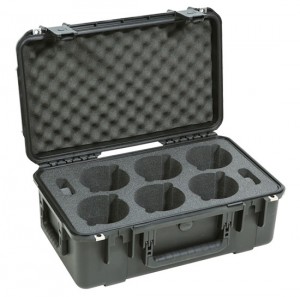Storage

One of the most important things to keep in mind when storing lenses, is to avoid storing them in a humid environment. Any environment where the humidity will reach or exceed 60% is considered humid. This stagnant air, darkness and humidity are a breeding ground for mold. If your lenses are exposed to humid conditions, especially condensing humidity, one or both of the following should be done:
- Expose the lens to sunlight in a moderate to low humidity environment (50% or less relative humidity) until it is completely dry to the touch.
- Allow the lens to sit outside its case in an air conditioned environment overnight.
Cleaning Optical Surfaces
It's important to keep your optical surfaces clean. Here are some simple rules for cleaning these surfaces:
- Do not clean lens surfaces with any dry cloth or tissue. This is the primary cause of scratched elements and can result in repairs costing thousands of dollars. No matter how high tech a new micro-fiber cloth claims to be, always use lens cleaning fluid.
 Without the lubricating property of the lens cleaning fluid, small abrasive particles will be ground into the lens surface and will remove the coating and possibly scratch the glass surface.
Without the lubricating property of the lens cleaning fluid, small abrasive particles will be ground into the lens surface and will remove the coating and possibly scratch the glass surface.
- Always blow the dust off the glass surface first. Do not blow compressed air straight into the glass. Blow at an angle to the glass.
- Clean from the center to the edge.
- Do not put the lens fluid directly on the glass. Liquids placed directly on lens elements can seep past the retaining rings and cause problems with the glass. Instead, put the lens fluid on the lens tissue or cloth first and then proceed to clean the glass.
- Use a cleaning fluid designed for cleaning coated photographic lenses. In a situation where you cannot obtain lens cleaning fluid, the following can be used as a temporary substitute:
- 85% Ethyl Alcohol (denatured alcohol)
- 15% Distilled Water
- Do not use any cleaning fluid meant for eyeglasses. These fluids can sometimes contain silicone or other components that will contaminate photographic optics.
Transporting Lenses

Another important practice is transporting your lenses. Lenses are sensitive, precision instruments and should always be transported in a properly designed lens case. At least 3 inches (7.5 cm) of foam should sit between any part of the lens and the outside of the case. Avoid using old cases that have a cloth, corduroy lining, which is very conductive to mold growth.
Lenses are sensitive to the position of the rotating rings when they are transported. Follow these recommendations to minimize the possibility of damage in transit:
Iris Ring
- Set the Iris ring to wide open on all lenses, always. In the wide open position, the blades are folded and protected by the iris plates and less susceptible to damage.
Focus Ring
- Threaded focus lenses (including Zeiss Standard and Super Speed, Compact Prime, CP.2 and most older lenses): set focus to infinity
- Cam focus lenses:
- Cooke S4: set focus to infinity
- Zeiss Master Prime: set focus to infinity or minimum focus, but do not leave in middle of focus range, especially if the lens is in vertical position.
Note: On some cam-focus lenses, the focus torque is very light, and it might make sense to use some tape to hold the focus ring in one of the preferred positions.
Zoom Ring
- The zoom ring should be at either the maximum or minimum focal length position. This depends on the lens, and for some lenses either position is OK. For zoom lenses that use springs in the zoom section, select the position where the springs are least extended (you can usually see if a zoom lens has springs by looking though the front element). You can contact our lens technicians at AbelCine for specific recommendations.
- We recommend disconnecting mounted zoom motors when transporting a zoom lens.
For questions for our lens technicians or for information on all of our lens services, contact:
| East Coast | West Coast |
| Jason Zapata | Girvan Calder |
| Service Manager | Service Manager |
| jzapata@abelcine.com | girvan@abelcine.com |
| 212-462-0126 | 818-303-8118 |

















